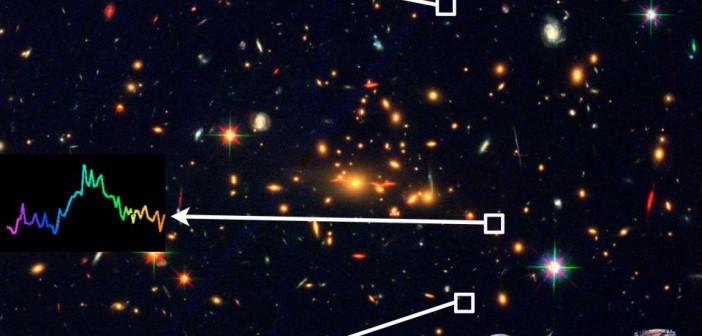Editor’s note: In these last two weeks of 2016, we’ll be looking at a few selections that we haven’t yet discussed on AAS Nova from among the most-downloaded papers published in AAS journals this year. The usual posting schedule will resume after the AAS winter meeting.
Detection of Lyman-Alpha Emission from a Triply Imaged z = 6.85 Galaxy Behind MACS J2129.4−0741
Published May 2016
Main takeaway:
A team led by Kuang-Han Huang (University of Caliornia, Davis) discovered a faint galaxy at z = 6.846 located behind the galaxy cluster MACS J2129.4–0741. This galaxy contains only one ten-thousandth the stellar mass of the Milky Way, and it’s the faintest galaxy we’ve found at this great distance.
Why it’s interesting:
This galaxy is roughly 13 billion years old, placing it near the end of the reionization epoch (in which the first stars formed and caused our universe to transition from neutral gas to ionized gas). Examining such a small galaxy at this distance provides valuable information about how the process of reionization may have occurred.
About the discovery:
The newly discovered galaxy was found due to a fortunate alignment with a foreground galaxy cluster. Gravitational lensing by the foreground cluster produced three images of the distant galaxy, which were identified as being the same galaxy due to their similar spectra.
Citation
Kuang-Han Huang et al 2016 ApJL 823 L14. doi:10.3847/2041-8205/823/1/L14

1 Comment
Pingback: 1,000 AAS Nova Highlights and Five Years of Astronomy